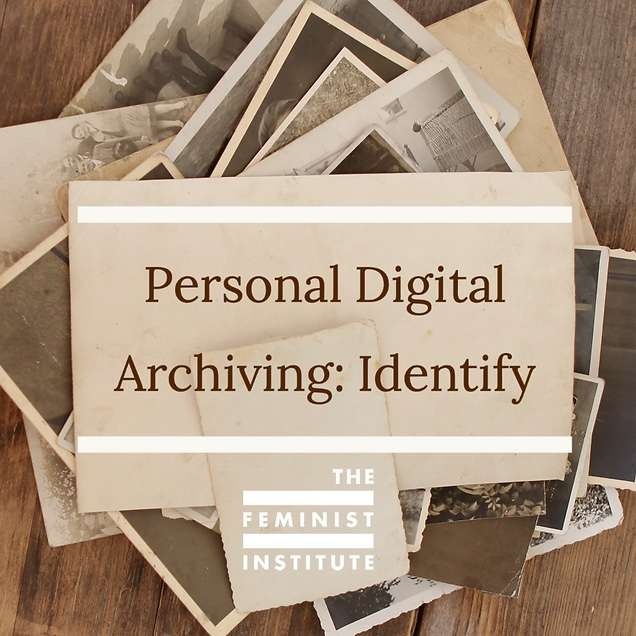Personal Digital Archiving: Identify
The Feminist Institute Jul 13, 2020 2 Minute Read

Starting a major organizational project can be overwhelming, especially if it involves family photographs, documents, and other meaningful ephemera. The sheer amount of stuff we accumulate, both physical and digital, can stop an information management project in its tracks.
Not immediately starting a personal archiving project is less of a problem with physical objects, such as photos and letters. We can store these physical objects indefinitely and, with minimal maintenance, not expect any significant changes. In the right conditions, if you save a birthday card from a family member and leave it in a closet for 15 years, you could expect to locate the card in the future and read it as if no time had passed.
This maintenance schedule, however, does not apply to digital objects. Technology continually evolves, leading to changes in file formats and software dependencies. If you saved a digital artwork made by a friend in an old version of Adobe InDesign, there is no guarantee that the future version of that software will open your file in 15 years. If you keep transferring that same file from one computer to another, there is a higher chance that it will corrupt or become a victim of accidental deletion.
Digital files require active maintenance over time. Creating a simple preservation plan will ensure that you have a consistent strategy for maintaining your digital life. By appropriately scaling your project from the beginning, it will be easier to organize over the years.
While we will make suggestions for best practices, we recognize that this process is personal. Following this basic structure will give you the necessary framework for starting this work, but you can adhere as strictly or loosely as it makes sense to you.
Planning your project
Identify your project’s scope. What is your goal? What are you looking to complete? It will be easier to break up your project into discrete, short-term chunks.
Identify your time commitment. How much time can you realistically set aside for the entire project? How long do you want to be working on each particular project chunk?
Identify your digital storage infrastructure. What are your current digital storage methods? What amount of money are you willing to invest in increasing your digital storage capacity? Knowing this ahead of time can help you assess what files you plan to keep.
Assessing your collection
Identify the file types you want to keep. Are you interested in keeping a back-up of your social media sites, or are you primarily interested in maintaining documentation, such as papers or photos? Consider creating an inventory of what file types you may wish to see in the future.
Identify file locations. Where are your files saved? Google Drive? A thumb drive? A floppy disk? Instagram? Consolidate all of the data you want to keep and put it in one location.
Identify to what level you plan on collecting certain file types. How many college papers do you want to save - all or a few? Do you want to maintain all of your cell phone photos, or do you want to curate them carefully? Is there content you would actively miss in 15 years? There are no fast and loose standards. It ultimately comes down to personal preference.

